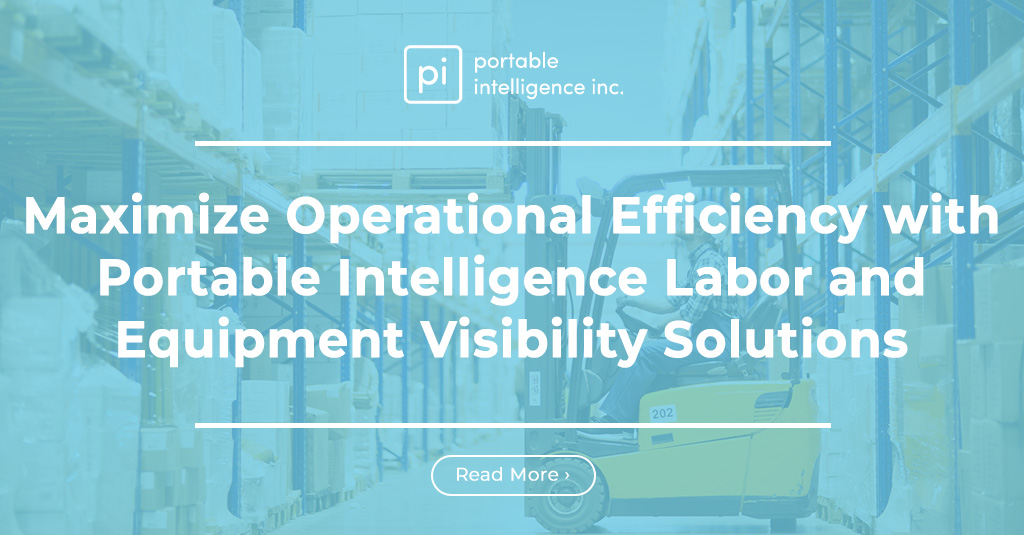Technology is getting smarter at a phenomenal rate and this means we can do everything more efficiently, faster, and with much less hassle. Smart Warehousing is therefore not a futuristic Sci-Fi concept but a rapidly growing necessity. It basically refers to incorporating Robots, Artificial Intelligence, and IoT (the Internet of Things) to digitize and automate several fulfillment activities to make warehouses faster and more efficient. Those solutions work together with human employees to save time and reduce errors while improving overall warehouse efficiency and employee productivity.
On-floor employees can then be freed up to focus on more value-driven and strategic activities or help guide machines that execute certain tasks. Efficient warehouse monitoring, faster shipping, lower returns, reduction in human errors, better customer experiences, and improved visibility of assets are some of the main benefits of smart warehouses.
Let’s dive into some details of these benefits.
The Benefits of Smart Warehousing
1. Lower Operational Costs Result In Lower Prices
Employee costs generally comprise about 60% of warehouse operating costs, and average wages in the distribution and warehousing industries have been rising steadily for more than a decade.
Smart warehouses reduce the demand for human labor by incorporating automated vehicles, drones, and robots, making operations completely or partially autonomous. This also optimizes the performance of human employees, which in turn leads to lower operating costs. These cost savings often translates to lower consumer prices for services and goods. The price of goods is a major attribute that customers use to make purchase decisions, making the ability to offer lower prices for equivalent goods or services a significant competitive advantage.
2. Improved Warehouse Optimization
The workflow of various fulfillment operations can be optimized and the efficiency of a warehouse improved by implementing smart solutions. Advanced analytics enabled by machine learning algorithms can help warehouse operators in managing inventory flow, optimize storage, and reduce process chokepoints. The data-driven approach helps keep track of the key metrics, while at the same time enabling a warehouse to streamline operations, which in turn leads to being able to offer better customer service.
These advanced technologies can also detect potential risks and problems early in the supply chain. The ability to have data about supplier risks and inventory enables warehouse managers to be proactive rather than reactive.
3. Better Accuracy in Warehouse Operations
Warehouse operations typically consist of various steps and processes that are prone to errors. Those errors can result in the whole business suffering a massive operational loss if they are not identified and resolved timeously. A major advantage of smart warehouses is higher accuracy at each step of the order fulfillment process. It also helps to reduce the number of items expiring, damaged, or getting lost as a result of improper inventory management.
4. Faster Picking and Shipping
In traditional warehouses, a disproportionate amount of time is spent on order processing. Employees often spend vast amounts of time traversing the warehouse floor to pick items and fill orders. Picking errors can also cause further delays in packing, sorting, and processing orders. Typical warehouses have a picking error rate of around 1% to 3%.
Picking error rates can be reduced to near zero by using smart warehouse solutions. Collaborative automated picking solutions and mobile robots reduce the time needed to pick orders and eliminate the long walks undertaken by warehouse employees. These factors lead to faster order shipping. For e-commerce consumers, shipping time is a very important buying consideration, second only to the item’s price. Faster shipping is an invaluable competitive advantage in an era of e-commerce prominence.
5. Fewer Returns
Traditional warehouses typically have picking error rates of between 1% and 3%. Manual picking processes are prone to human error, irrespective of how experienced the employees are, and this makes picking errors inevitable. Smart warehouses reduce picking errors significantly and this in turn helps to reduce returns.
Improved order accuracy will result in improved customer satisfaction while also leading to repeat business and customer loyalty. Although some returns will likely still occur, most of these will be for reasons other than errors with orders. A smart warehouse will also enable companies to process these returns faster than a traditional warehouse can.
Smart automation solutions such as collaborative mobile robots will significantly increase picking accuracy. Increased order accuracy will in turn reduce internal order rework and auditing costs.
6. Better Inventory and Asset Tracking
Tracking inventory efficiently is a big concern for many warehouses. Knowing exactly where in the supply chain a specific product is can help managers estimate when the next batch of products is required to prevent stock-outs, improve supply chain planning, and gain insights about orders processed. In a smart warehouse, integrated sensors, barcodes, RFID tags, and other technologies provide incomparable visibility of inventory status and product movement.
7. Improved Customer Service
Every item in a warehouse will ultimately end up with the consumer. It is therefore crucially important to focus on customer satisfaction, experience, and service. Companies can use smart warehousing to improve the way they fulfill their customers’ changing demands, interact with them, enhance the overall experience, and provide support. With faster responses, reduced costs, and faster shipping, businesses can build customer bases that are satisfied with their service. This will also lead to better customer satisfaction and customer experiences
Conclusion
Forward-thinking businesses are slowly but surely starting to implement smart warehousing. Many businesses have started replacing legacy systems, spreadsheets, and other elementary processes with some of the smart warehousing components mentioned here. With swiftly evolving consumer expectations and demands, building a smart warehouse is crucial to remain competitive.




